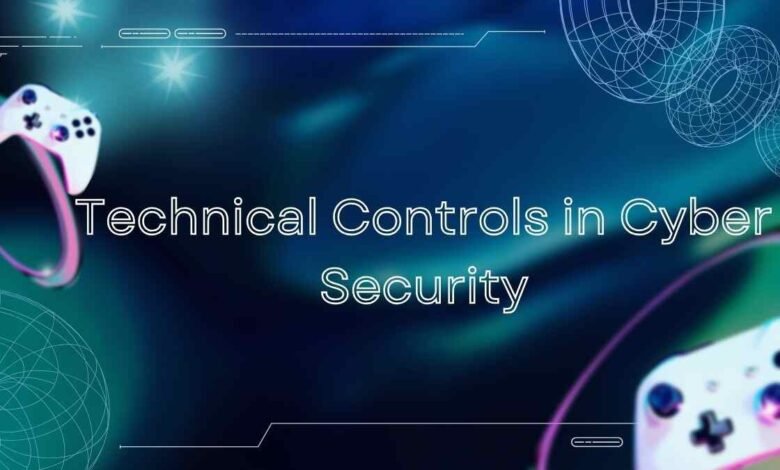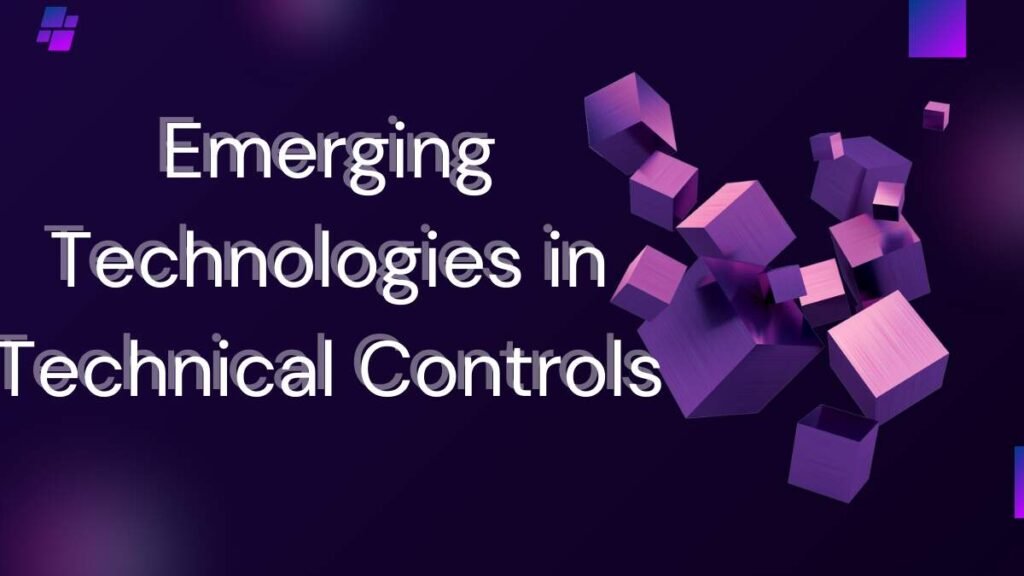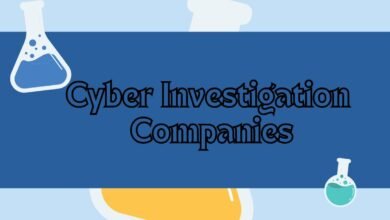Technical Controls in Cyber Security: A Comprehensive Guide

Technical controls in cyber security, with the rapid increase in cyber threats, protecting sensitive data and maintaining the integrity of IT systems have become top priorities for businesses and individuals alike. This is where technical controls in cyber security come into play. These are the backbone of a robust cyber defense strategy, helping organizations prevent, detect, and respond to cyber threats effectively.
What Are Technical Controls in Cyber Security?
Technical controls refer to the security measures implemented through hardware, software, or firmware to protect an organization’s IT environment. Unlike administrative controls, which focus on policies and procedures, technical controls are the tangible elements that safeguard networks, systems, and data. They play a crucial role in preventing unauthorized access, detecting potential threats, and responding to security incidents promptly. But why are these controls so vital? Simply put, without robust technical controls, any organization is vulnerable to a myriad of cyber threats, ranging from malware and ransomware to phishing attacks and data breaches. Effective technical controls provide a layered defense, minimizing the chances of a successful attack and ensuring quick recovery if one does occur.
Types of Technical Controls
Technical controls in cyber security are typically categorized into three main types: preventive, detective, and corrective. Each category serves a specific purpose and works in tandem with the others to create a comprehensive security posture.
Preventive Controls
Preventive controls are designed to block or mitigate threats before they can exploit vulnerabilities. Key examples include:
Firewalls: Technical Controls in Cyber Security
These are the first line of defense in any cyber security strategy. Firewalls monitor incoming and outgoing network traffic and block any unauthorized access based on predetermined security rules.
Intrusion Prevention Systems: Technical Controls in Cyber Security
An IPS monitors network traffic to detect and prevent identified threats. It actively blocks malicious activities, stopping them before they cause harm.
Detective Controls: Technical Controls in Cyber Security
Detective controls aim to identify and alert to any suspicious activity or potential threats that have breached preventive measures.
Must Visit: Digitzo
Intrusion Detection Systems: Technical Controls in Cyber Security
An IDS monitors network or system activities for malicious actions or policy violations. It provides real-time alerts, allowing for quick response to potential breaches.
Security Information and Event Management (SIEM)
SIEM solutions collect and analyze log data from various sources to detect abnormal activities and provide comprehensive visibility into the security landscape.
Corrective Controls
Corrective controls focus on minimizing the impact of a security breach and restoring systems to normal operation. Examples include:
Incident Response Systems
These systems provide a structured approach for handling security breaches, from identification to containment, eradication, and recovery.
Patch Management: Technical Controls in Cyber Security
This involves regularly updating software to fix vulnerabilities that could be exploited by attackers. Patch management is critical for maintaining the security integrity of systems.
Preventive Controls in Detail
Preventive controls are all about stopping threats in their tracks. Let’s dive deeper into how some of these controls work:
How Firewalls Work: Technical Controls in Cyber Security
By using a set of defined rules, firewalls decide which traffic is allowed to pass through and which should be blocked. This not only prevents unauthorized access but also protects against malware, viruses, and other forms of malicious code.
IPS in Preventing Attacks: Technical Controls in Cyber Security
An IPS not only detects threats but also takes automatic action to stop them. For example, if an IPS identifies unusual traffic that matches known attack patterns, it can immediately block that traffic and alert administrators. This proactive approach is crucial for mitigating zero-day vulnerabilities that traditional firewalls might miss.
Understanding Detective Controls

Detective controls are the eyes and ears of a cyber security strategy, constantly monitoring for signs of trouble.
Role of IDS in Cyber Security: Technical Controls in Cyber Security
An IDS operates by inspecting all inbound and outbound network traffic and searching for suspicious patterns that could indicate a cyber attack. Unlike a firewall, which blocks traffic, an IDS simply raises an alarm, giving IT teams the information they need to investigate and act.
Benefits of SIEM in Threat Detection
SIEM solutions are powerful tools that aggregate data from multiple sources across an organization’s IT environment. By analyzing this data in real-time, SIEMs can detect unusual behavior, such as an employee logging in at odd hours or accessing files they usually wouldn’t. This helps organizations detect and respond to threats more quickly and effectively.
Controls Explained
When preventive and detective controls fail, corrective controls come into play to minimize damage and restore normalcy.
Steps in Incident Response: Technical Controls in Cyber Security
An incident response plan typically involves several key steps: identification of the incident, containment to prevent further damage, eradication of the root cause, recovery of affected systems, and a post-incident analysis to improve future responses. Each step is critical in managing and mitigating the impact of a security breach.
The Role of Patch Management in Cyber Security
Keeping systems up to date with the latest patches is one of the most effective ways to protect against exploits and malware. Failure to do so can leave organizations open to attack, as seen in numerous high-profile breaches.
How Technical Controls Interact
A robust cyber security strategy doesn’t rely on a single type of control but rather a combination of preventive, detective, and corrective measures. This layered defense approach ensures that if one control fails, others are in place to provide backup.
Integration of Preventive, Detective, and Corrective Controls
For example, while firewalls and IPSs (preventive controls) block many threats, an IDS and SIEM (detective controls) monitor for those that slip through, and an incident response system (corrective control) helps mitigate any damage from successful attacks. This synergy creates a more resilient defense against the myriad of cyber threats facing organizations today.
Creating a Layered Defense Strategy: Technical Controls in Cyber Security
Think of cyber security like the layers of an onion—each layer adds another level of protection. By integrating multiple technical controls, organizations can build a more comprehensive security posture that reduces the likelihood of a successful attack and limits the damage when breaches do occur.
Challenges in Implementing Technical Controls
While technical controls are essential, implementing them effectively is not without challenges.
Technical Limitations: Technical Controls in Cyber Security
Some organizations may face technical constraints, such as outdated infrastructure or lack of expertise, which can make it difficult to implement and maintain effective technical controls.
Human Factors and Errors
Even the best technical controls can be undermined by human error, such as poor configuration or failure to apply patches. Training and awareness are crucial to minimizing these risks.
Practices for Implementing Technical Controls
To maximize the effectiveness of technical controls, consider these best practices:
Regular Updates and Patches: Technical Controls in Cyber Security
Always keep systems and software up to date with the latest security patches to protect against known vulnerabilities.
Continuous Monitoring and Testing
Regularly test and monitor your technical controls to ensure they are functioning as expected and are effective against the latest threats.
Emerging Technologies in Technical Controls

The field of cyber security is constantly evolving, with new technologies emerging to address ever-changing threats.
AI and Machine Learning in Cyber Security
Artificial intelligence (AI) and machine learning (ML) are becoming increasingly important in cyber security. These technologies can analyze vast amounts of data to detect anomalies and predict potential threats, providing a proactive approach to threat management.
The Future of Quantum Computing and Cyber Defense
Quantum computing holds promise for both improving cyber security measures and posing new challenges. While it could potentially break current encryption methods, it also offers opportunities for developing more robust cryptographic techniques.
Case Studies: Technical Controls in Action
Looking at real-world examples can provide valuable insights into how technical controls work in practice.
Real-World Examples of Successful Cyber Defense
Many organizations have successfully thwarted cyber attacks by implementing robust technical controls. For instance, a financial institution that effectively used SIEM to detect and stop a phishing attack before it could cause significant damage.
Lessons Learned from Security Breaches
Conversely, examining breaches where technical controls failed can highlight areas for improvement. The 2017 Equifax breach, for example, underscored the importance of timely patch management.
Technical Controls on Business Continuity
Beyond just preventing breaches, technical controls are vital for ensuring business continuity.
Minimizing Downtime: Technical Controls in Cyber Security
By quickly detecting and responding to threats, technical controls help minimize downtime, ensuring that business operations can continue with minimal disruption.
Protecting Data Integrity and Privacy
Effective technical controls are crucial for maintaining the integrity and privacy of sensitive data, which is especially important for organizations handling personal or financial information.
Cost-Benefit Analysis of Technical Controls
Investing in technical controls can be expensive, but the benefits often outweigh the costs.
Evaluating the ROI of Cyber Security Investments
While the upfront costs of implementing technical controls can be high, the potential savings from avoiding a major breach—both in terms of financial loss and reputational damage—make them a worthwhile investment.
Balancing Cost with Effectiveness: Technical Controls in Cyber Security
It’s important to find a balance between cost and effectiveness. Over-investing in overly complex solutions can be as detrimental as under-investing in essential controls.
Regulatory Compliance and Technical Controls
Regulatory compliance is a key consideration in cyber security, with technical controls playing a crucial role in meeting these requirements.
Understanding GDPR, HIPAA, and Other Regulations
Many regulations, such as the General Data Protection Regulation (GDPR) and the Health Insurance Portability and Accountability Act (HIPAA), mandate specific technical controls to protect personal data.
Ensuring Compliance through Effective Technical Measures
Implementing the right technical controls not only helps protect against cyber threats but also ensures compliance with regulatory requirements, avoiding potential fines and legal issues.
Conclusion
In the ever-evolving landscape of cyber security, technical controls are more important than ever. From firewalls and intrusion prevention systems to incident response and patch management, these controls form the backbone of a comprehensive cyber defense strategy. By understanding the different types of technical controls and how they interact, organizations can build a robust, layered defense that minimizes risk and maximizes resilience. Staying ahead of cyber threats requires continuous monitoring, regular updates, and a proactive approach to emerging technologies and challenges.
FAQs
What are the most effective technical controls for small businesses?
For small businesses, implementing a robust firewall, regular patch management, and a reliable SIEM system are often the most cost-effective technical controls. These provide essential protection against common threats and ensure quick detection and response.
How often should technical controls be updated?
Technical controls should be updated regularly, ideally in real-time or as soon as new updates and patches are released. Continuous monitoring and regular audits can help ensure that all systems are up to date and functioning effectively.
What role do employees play in maintaining technical controls?
Employees are crucial in maintaining technical controls. They need to be trained in recognizing potential threats, following security protocols, and promptly reporting any suspicious activities. Human vigilance complements technical measures, creating a more robust security posture.
Are there any risks associated with over-reliance on technical controls?
Over-reliance on technical controls can lead to complacency and a false sense of security. It’s important to remember that no system is infallible, and a balanced approach that includes both technical and administrative controls, along with regular training, is essential.
How do technical controls differ from other types of cyber security measures?
Technical controls focus on using technology to prevent, detect, and respond to threats, while other measures, such as administrative and physical controls, involve policies, procedures, and physical barriers. Together, they provide a comprehensive approach to cyber security.
Must Visit: Well Wave




